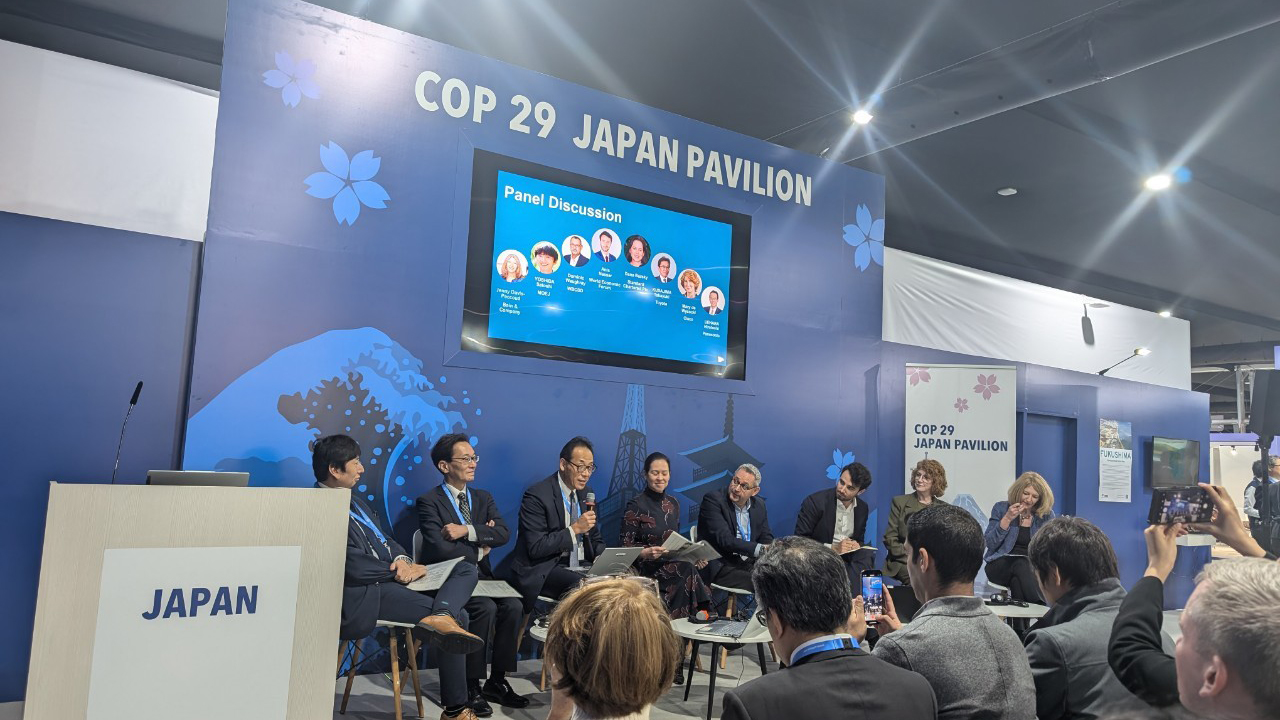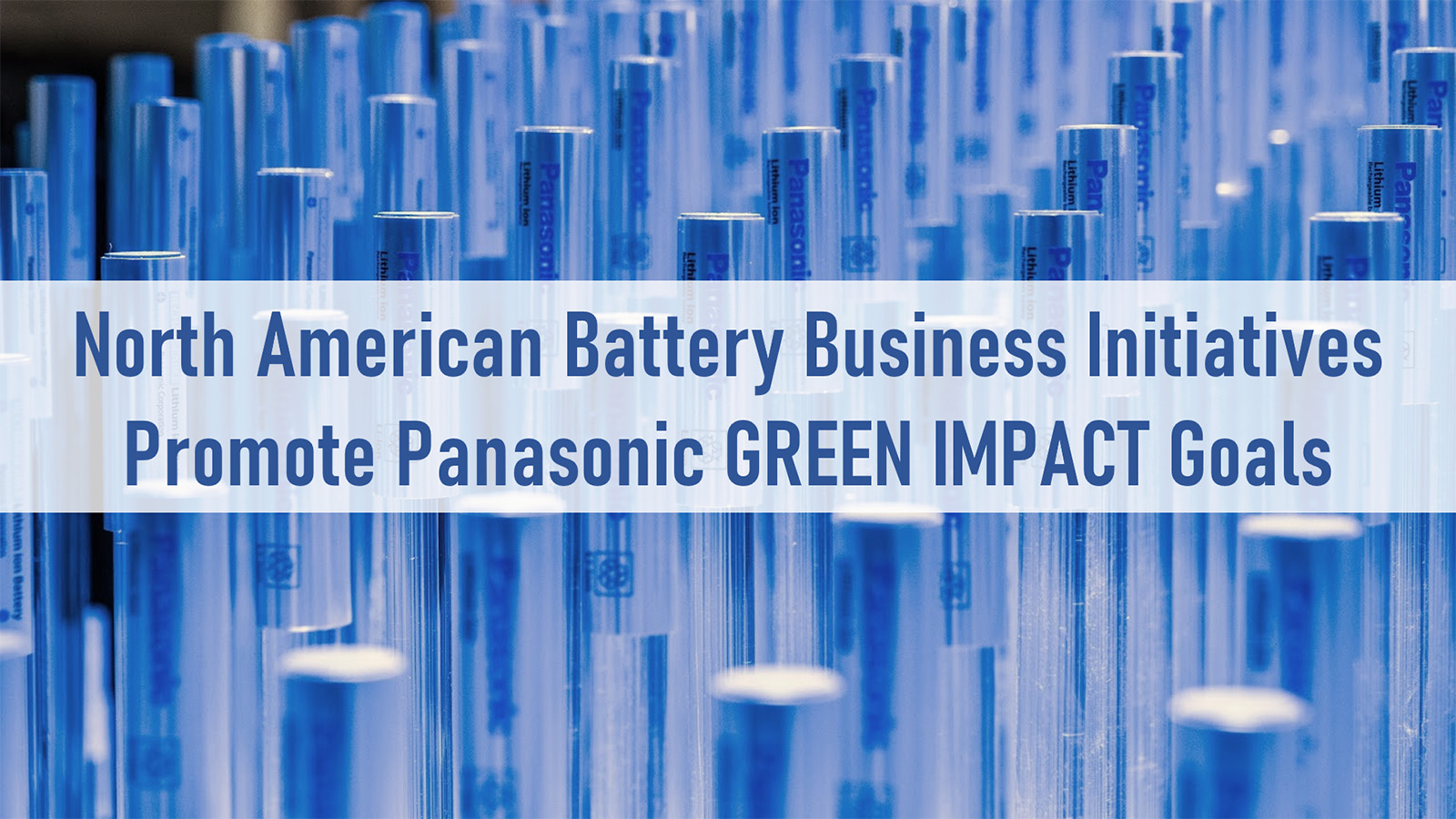
Jan 06, 2025
- 可持续发展
- 专题报道
- Panasonic GREEN IMPACT
- 氢能源解决方案
- 循环经济
- 集团总裁
- 欧洲和独联体
- 商业解决方案
- ESG管理

松下集团是参加 1 月 5 日至 8 日在内华达州拉斯维加斯举行的 CES2023 的全球领先公司之一。在“Panasonic GREEN IMPACT”的概念下,集团的展览分为四个区域——PARK、TOWN、MOBILITY、和 HOME——展示有助于解决环境问题的新举措和技术如何改变人们的生活和工作方式。
在移动领域,在电动汽车 (EV) 的日益普及和社会基础设施电气化以应对和解决环境问题的背景下,市场预计将迅速扩大,关注的焦点是松下能源的汽车用圆柱形锂电池离子电池,提供世界上最高的能量密度和行业领先的安全性和可靠性。

松下集团CES2023展台MOBILITY区的圆柱形电池展示
在松下 1 月 4 日的CES2023新闻发布会上,集团首席技术官小川达男谈到了松下绿色影响 (PGI),这是松下集团实现更美好生活和可持续发展环境的长期环境愿景。 PGI 的核心目标是到 2030 年将集团业务活动的 CO 2排放量减少到几乎为零,并避免排放超过 3 亿吨1,即目前全球 CO 2排放量 330 亿吨2的大约 1%,通过2050. 除了这些长期目标外,松下还推出了 GREEN IMPACT 2024,即其近期环境行动计划。

Allan Swan 在 CES2023 新闻发布会上发言
北美松下新能源株式会社总裁Allan Swan在新闻发布会上介绍了该公司在北美的EV电池相关活动。根据美国环境保护署的数据,交通运输占美国所有温室气体排放量的27%,是所有部门中最大的。 Swan 指出,预计未来几年电动汽车的采用率将大幅增加,并预测到 2030 年,美国所有汽车销量的一半以上将是电动汽车。 “支持这种增长的一个关键组成部分是电池,”他告诉听众。
CES 2023:松下电动车电池开启电动革命
作为松下集团的一员,松下新能源株式会社涉足电池业务已有近 100 年的历史。公司名称代表松下集团致力于为可持续发展的环境提供节能产品。
正如 2022 年 7 月发表的文章“不断发展的能源解决方案以促进更可持续发展的社会”中所述,松下新能源株式会社致力于通过提供环保能源解决方案和电池为碳中和社会做出贡献,帮助建设安全可靠的社会基础设施并促进电气化流动性。
如果解决方案本身不绿色,仅仅提供绿色能源解决方案是不够的。松下新能源株式会社承诺到 2031 财年(相对于 2022 财年的水平)将汽车电池生产产生的 CO 2排放量减少一半,并通过使用其产品帮助减少 6000 万吨 CO 2排放量,减少五倍到 2022 财年影响会增加。该公司还采取措施确保其所有生产设施到 2029 财年几乎实现碳中和。今天,松下新能源株式会社正在采取措施开发减少稀有金属使用的新方法,建立低碳足迹的供应链,并积极推动流程开发和回收方面的外部合作,以实现这一目标。

在 CES2023 上,Swan 解释说,松下看到了一个巨大的机会,可以通过解决关键障碍——电池供应来改变现状并开启电力革命。位于内华达州斯帕克斯的高度自动化的松下新能源株式会社(PENA) 目前每秒生产 66 个汽车电池,每天生产 550 万个电池,每年生产 20 亿个电池,足以为 500,000 辆汽车提供动力。截至 2023 年 1 月,该工厂已累计生产超过 70 亿块电池。
为了满足对电动汽车不断增长的需求,松下新能源株式会社计划提高其汽车电池的产能,重点放在北美市场,在那里它可以利用其高能量密度电池技术——更高的能量密度意味着更长的续航里程车辆——并提供三种电池(1865、2170 和 4680)。该公司近期宣布将在美国堪萨斯州新建一座大型工厂,并与美国高端电动汽车制造商 Lucid Group, Inc. 签订电动汽车电池供应协议。范围。松下新能源株式会社在扩大产能的同时,也在努力使其北美供应链更具可持续性。这种努力促进 PGI 并扩大其环境贡献的例子包括从 Nouveau Monde Graphite Inc. (NMG) 采购低碳足迹 (CFP) 石墨,以及从 Redwood Materials Inc. 采购再生阴极材料和铜箔。让我们仔细看看这些举措。
2022 年 11 月 2 日,松下新能源株式会社宣布在堪萨斯州德索托的工地开始施工。 2170车用圆柱锂离子电池计划于2025年3月底开始量产,新厂初期产能约为30GWh,公司整体产能将扩大60%。除了通过数十亿美元的经济活动和数千个工作岗位支持当地经济外,在全球加速转向电动汽车之际,该工厂还将使松下新能源株式会社能够加强其在北美的汽车电池供应系统。新工厂还将有助于松下集团致力于减少整个社会的 CO 2排放量。

艺术家对堪萨斯州德索托工厂的渲染图
2022 年 12 月 13 日,松下新能源株式会社宣布了一份多年期合同,为 Lucid 的 Lucid Air 电动汽车和其他应用提供锂离子电池。松下新能源株式会社将于 2023 年开始供应电池,从其在日本的现有制造工厂采购,并在未来从堪萨斯州德索托工厂采购。
此前,2022 年 10 月 20 日,松下新能源株式会社宣布与加拿大石墨制造商 NMG 签署长期供应协议谅解备忘录 (MOU)。使用由 NMG 的可再生能源提炼的对环境影响小的石墨材料将使公司更接近到 2030 年将碳足迹减半的目标;从加拿大为其美国电池生产设施采购材料也将缩短供应链距离,并显着减少物流活动产生的 CO 2排放量。
最后,2022年11月15日与美国电池回收公司Redwood Materials Inc.签署的采购协议,是针对锂离子电池所用的正极材料和铜箔。回收的阴极材料将于 2025 年开始在堪萨斯州的新工厂使用,而回收的铜箔将从 2024 年开始在内华达州斯帕克斯的 PENA 使用。
凭借其卓越的技术和丰富的经验,松下新能源株式会社将推动锂离子电池行业的发展,加快实现零排放的努力,并支持松下集团利用 PGI 活动解决社会问题和实现可持续发展社会的承诺。
13亿吨按2020年排放因子计算
2 2019 年与能源相关的 CO 2排放量为 336 亿吨(来源:IEA)
本网站内容在发布时准确无误,但可能随时更改,恕不另行通知。
因此请注意,这些文档可能并不总是包含最新信息。
请注意,德语、法语和中文版本均为机器翻译,因此质量和准确性可能有所不同。